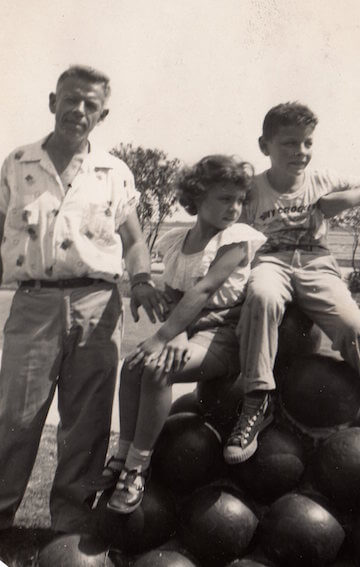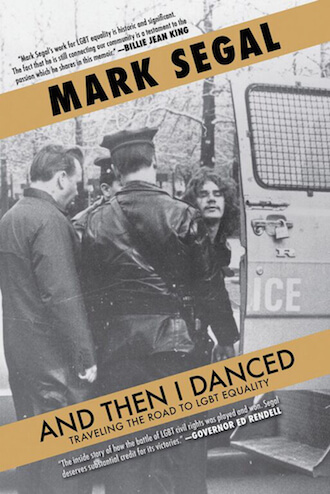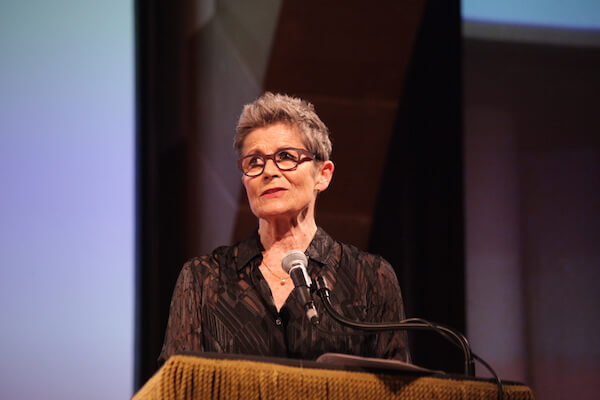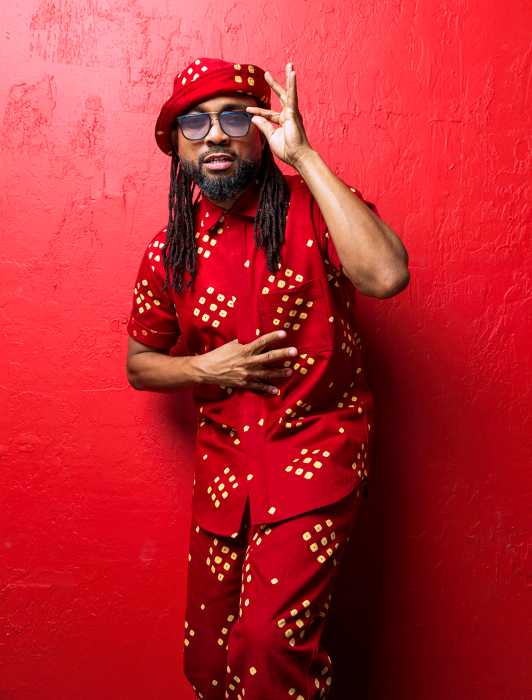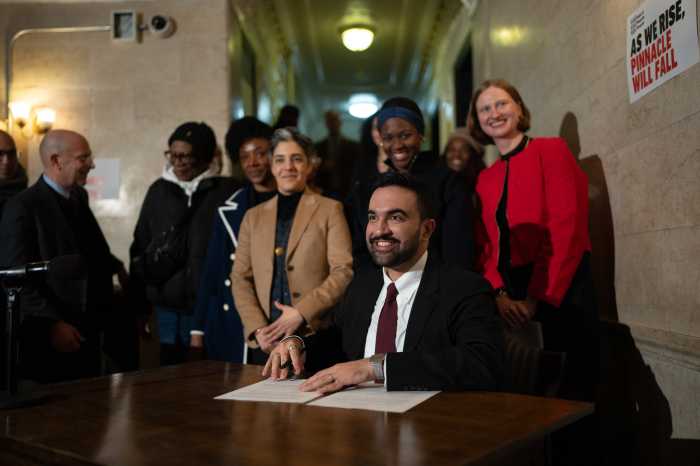Perry Brass. | COURTESY OF PERRY BRASS
This past March, I received a call from Dr. Art Rastinehad, the young urologist who had just performed the latest prostate biopsy on me — the fifth done on me over the last decade — informing me I have prostate cancer. Though for years I had faced the possibility of this diagnosis, no one ever is really prepared for it.
For a moment, I stopped breathing. It instantly brought back to me my father’s horrible, painful death from colon-rectal cancer when I was 11, and the fear that my life, with all of its routines and pleasures, was really going to change. How was I going to handle that?
At 68, I learned I was going to be a cancer patient. The thought terrified me.
First in a series on a gay man facing prostate cancer
I could barely speak when I hung up. I managed to tell my husband, Hugh Young, then Ricardo Limon, my closest friend. After that, I could barely talk about it for days. I just held it inside me, or tried as best I could to deny it.
In truth, I’d been expecting this diagnosis (while at the same time hoping against it), due to my having a chronically high PSA level. PSA, or Prostate Specific Antigen, is determined by a blood test that tracks a protein in your blood released by infections in the prostate. These infections can range from more treatable forms of prostatitis to cancer itself. A “perfect” PSA is a 0, meaning no infection at all. After 0, a number spread is given to the readings. For a decade mine had ranged from a 6 to an 8 — without any indications of prostatitis. So I didn’t have a prostate infection, per se, but did have this high PSA. I was also taking Finesteride, a drug normally prescribed for an enlarged prostate — the problem that causes men to have to pee over and over in the middle of the night — and Finesteride itself halves your PSA. In other words, my 6 was actually a PSA of 12, my 7 a 14, my 8 a 16.
Any PSA over a 4 makes urologists take notice, and my first biopsy, done in Brooklyn, was performed with almost no anesthesia other than a local in the form of a crème. I was literally bent over a table, and told by the urologist that I’d experience only a “slight pinch.” I screamed loud enough to be heard in Manhattan; it was like having a rattlesnake shot up my ass seven times. The reality is a small needle sent up your rectum to get to your prostate. Like a harpoon, it retrieves minute samples of prostate material to be analyzed by a pathologist. A few weeks later, it came back negative. What a relief! I was off the hook.
Still, my PSA never got lower than the safety of 4, and that in itself bothered the next several urologists I saw. One of the indicators of cancer is a bouncing PSA; it veering from one number to another too fast suggests there is an infection, possibly cancer, working through you. For years, mine was doing that, rarely settling in on one number. I had three other biopsies over the years — by then I insisted I be knocked out by anesthesia for each.
And each came back negative, puzzling both me and my doctors.
“You are,” Dr. Rastinehad explained to me in March, “a Gleason 7. Or 3 + 4.” In treating prostate cancer, your Gleason number, derived by a pathologist from your biopsy, is important; it describes where the cancer is located and in what density. A “3 +4” meant that my cancer was located in two areas, and is aggressive, but not as aggressive as a “4 + 3.” Gleason 6 means that your cancer is manageable. There are men with that number who do nothing: they are in “Active Surveillance” and may submit to a biopsy every few years, get their PSA’s taken often, and hope for the best. At 7, you are already in the territory of risk that your cancer can spread — metastasize to your bones and pelvis — thereby progressing to a Gleason 8, or, worse, a 9, which is called “Stage 4 prostate cancer.”
So getting this diagnosis when I did was fortunate; I even describe it even as a “stroke of luck,” in that I finally found out where my cancer had been hiding. Rastinehad told me exactly where the cancer was, and why it had not been found in earlier biopsies. Exactly how this happened is also part of my story.
Last October, Mark Horn, a long-time friend, revealed that he’d had prostate cancer — PC for short — for eight years. His Gleason score was a 6, qualifying him for Active Surveillance. I told him about my struggles with repeated biopsies, which in themselves can be risky procedures, doing possible harm to the prostate, and, at a minimum, usually resulting in bleeding in your urine, feces, and semen for a week or so afterwards. Mark strongly suggested that before my next biopsy I get an MRI (Magnetic Resonance Imaging) of my prostate. The MRI would show areas of the prostate that are questionable due to having a lighter density, an indicator of infection or cancer. Using this MRI, it’s easier for a urologist to focus exactly where to aim the biopsy needles.
I went to my urologist, Dr. Craig Nobert, who felt that I was due for another biopsy, and asked him for an MRI. He responded, “I can get you one, but they’re not very conclusive.”
Mark had told me to insist, and I did. Very generously, Nobert referred me to his colleague Rastinehad, a younger urologist at Mt. Sinai who has been working with the use of MRI’s and prostate biopsies for several years. I immediately felt a great deal of confidence being in Rastinehad’s hands, even though this use of MRIs and biopsies is still considered experimental by some insurers.
I completed the MRI, and in March went to Beth Israel to have Rastinehad do the biopsy, not under a general anesthesia but rather using an effective local. To target the biopsy needle with even greater specificity, he used an Ultrasound at the same time — a procedure that required me to have my legs raised in stirrups, something I’d never experienced before. Half-dozing through the procedure, I felt occasional slight, but unsettling pinches. I received more anesthesia when I asked for it, but when my legs were removed from the stirrups they were very wobbly.
For the next nine days, while the samples were analyzed by a pathologist, I really didn’t want to think about the whole business, deciding I would be negative again; it just had to be. Then Rastinehad called with the results, and told me that the problem all along had been that the cancer was located extremely close to my urethra; any urologist not using an MRI and an Ultrasound would never get that close for fear of permanently damaging that urine duct. The truth was that I might have been positive for years, the cancer simply being missed by all my previous biopsies. My luck was in having used an MRI; without it, I could have gone undiagnosed until I became symptomatic enough to have bone pains and bleeding and had landed squarely in Stage 4 prostate cancer.
Perry Brass, at nine years old, with his seven-year-old sister Nancy and their father Louis. | COURTESY OF PERRY BRASS
Predicting the progression of prostate cancer — how fast it is growing, and where it will end up — is difficult. Its location and other factors, including genetics (very important), age, and lifestyle, all play a part. Smokers and men who are heavy, for example, are in more danger. Some contributing factors regarding diet have not been fully confirmed, but there are doctors who suggest that men with a raised PSA level eliminate all red meat, a source of testosterone, from their diet. Yet one friend my age, a life-long vegetarian, came down with PC five years before I did — and his case raises other questions. He’s been in a long-time domestic relationship with two other men; all three of them were diagnosed with PC within the space of three years. Can PC be, in any way, transmitted sexually, or can chances of developing it be accelerated by sex? There has been some evidence that prostate massage can be good for you, and even anal sex, if done carefully, can be helpful to your prostate. But there have been no scientific studies done on this or other ways in which sexual life experiences (including contracting STDs) affect prostate cancer.
Being a gay, older man facing prostate cancer, I was not alone: I have about a dozen friends who’ve fought this disease, and there is a somewhat loose network of support for us — gay men confronting a battle with a cancer that can kill. Each year, approximately 33,000 men die of prostate cancer; it is hard to tell how many are gay, but gay prostate cancer has become an issue in a community that is both aging and accepting its aging.
Youth, however, is no barrier to the disease. In recent years, the average age of prostate cancer patients has declined, with men as young as 40 now being diagnosed with it. Why? It could have to do with prescription drug use, intake of testosterone additives, fat-laden diets, stress, and other co-factors including genetics. For example, African-American men today are experiencing higher than average rates of prostate cancer, and with more of them uninsured they are dying from the disease at a higher rate than men from any other ethnic background. Among young men diagnosed, one co-factor is more rapid progression of the disease, making it all the more important that younger men start getting digital examinations — a doctor performing a finger probe of the prostate through the rectum — earlier than most physicians are willing to offer them, and also have their PSA levels checked.
PSA’s in themselves are controversial. Some studies have shown that they are inconclusive and lead to biopsies that don’t need to be done or to faulty diagnoses. I’ve yet to meet a urologist who discounts them, however, all of those I’ve seen saying they are an extremely effective tool for flagging cancer that is coming.
After my diagnosis, when I returned to my original urologist, Craig Nobert, he quickly read my mind.
“Most men, when they hear that word ‘cancer,’ the whole conversation stops,” he said. “It shouldn’t.”
Norbert took me through all the “options,” with their pluses, minuses, and possible complications. Initially, I intended to go with radiation beam therapy and the “seeds” — small radioactive particles surgically implanted in your prostate to target the cancer. This option was certainly less threatening to me than having my prostate surgically removed. Hormone therapy — aimed at reducing my testosterone level to zero to starve the cancer of male hormones, the element that it grows on, and carried out in tandem with chemotherapy and radiation — was also a disturbing prospect. Several of my friends had gone that route, and been basically pushed into a menopausal state of hot flashes, breast enlargement, mood swings, depression, and skin outbreaks. I dreaded that.
Nobert suggested a “second opinion”— which is standard for patients facing the sort of life choice I was confronting. In the end, I got four, after first returning to Art Rastinehad, basically for moral support. He told me I was in great physical shape and should consider a radical prostatectomy. It’s major surgery but, still in my 60s, I was strong enough to stand it. The payoff is that it would simply cut the source of the cancer out of me.
Then I went to a wonderful radiologist at Mt. Sinai West, Dr. Andrew Evans, who told me that with a Gleason score of 7, radiation and the seeds provided a good prognosis, with basically no pain and little recovery time. He also, however, underscored a warning Nobert had earlier given me: Once you do radiation, if the cancer has spread and you need to do a radical prostatectomy afterward, the burn damage from the radiation makes it difficult to salvage those very important nerves in the prostate that lead to sexual response; as a result, getting an erection can be difficult.
If that weren’t strong enough medicine, he added, “It’s like taking apart a grilled cheese sandwich after it’s been grilled.”
Going outside the Mt. Sinai system for another perspective, I saw Dr. Jim Hu, an excellent urological surgeon with a great reputation at Weill Cornell Medical Center who had performed a large number of prostatectomies. By this point, any denial I had was crumbling. I was a cancer patient; I had to face it. Still, I was falling apart every time I went into a PC discussion in a medical setting. I would start crying without any warning, barely able to contain myself. Though I let a few more people know about my diagnosis, I was still mostly keeping it to myself. My husband Hugh suggested psychotherapy, but I found that even the energy to do that was missing: I needed to get my treatment resolved, and each “second opinion” only hammered that in.
I spoke again to Mark Horn, who by this time had completed another biopsy, in which his Gleason had jumped to 7.
“I’m going to do a robotic radical prostatectomy,” he told me. “And I want to do it as fast as I can. I’ve had a great run on Active Surveillance, but I can’t take a chance with this. Also, I’m in good shape, and I want to do this while I’m still young enough to get through this operation without problems.”
The conversation with Mark suddenly crystalized everything for me. I did not want to undergo radiation if the result would be that dreaded “grilled cheese” effect — I would not risk having major erectile dysfunction for the rest of my life. And hormones scared the crap out of me, as did any form of chemotherapy — certainly at this point. Mark also told me that he was getting one of the best prostate cancer surgeons in the country to do it: Dr. Ash Tewari, the head of urology at Mt. Sinai, the man who basically oversees Art Rastinehad and Craig Nobert’s work. I asked Mark if he thought there was any chance I’d get Tewari to do my operation, and he warned he was very booked.
I quickly called Tewari’s office and made an appointment for a week later. Very anxious, I arrived to find a warm and supportive doctor, who asked me, “What can I do for you?” I answered, “You can do this operation on me, like you’re doing for my friend Mark Horn.”
He smiled. “Mark’s my friend, too. I’ll be glad to do it.”
Next installment: “An Invader in the Pleasure Dome — Support and the Operation.” A gender rights pioneer and award-winning writer, Perry Brass has published 19 books, including poetry, novels, short fiction, science fiction, and bestselling advice books (“How to Survive Your Own Gay Life,” “The Manly Art of Seduction,” “The Manly Pursuit of Desire and Love”). A member of New York’s radical Gay Liberation Front, in 1972, he co-founded, with two friends, the Gay Men’s Health Project Clinic, the first clinic on the East Coast specifically serving gay men that is still operating as the Callen-Lorde Community Health Center. Brass’ work, based in a core involvement with human values and equality, encompasses sexual freedom, personal authenticity, LGBT health, and a visionary attitude toward all human sexuality.

